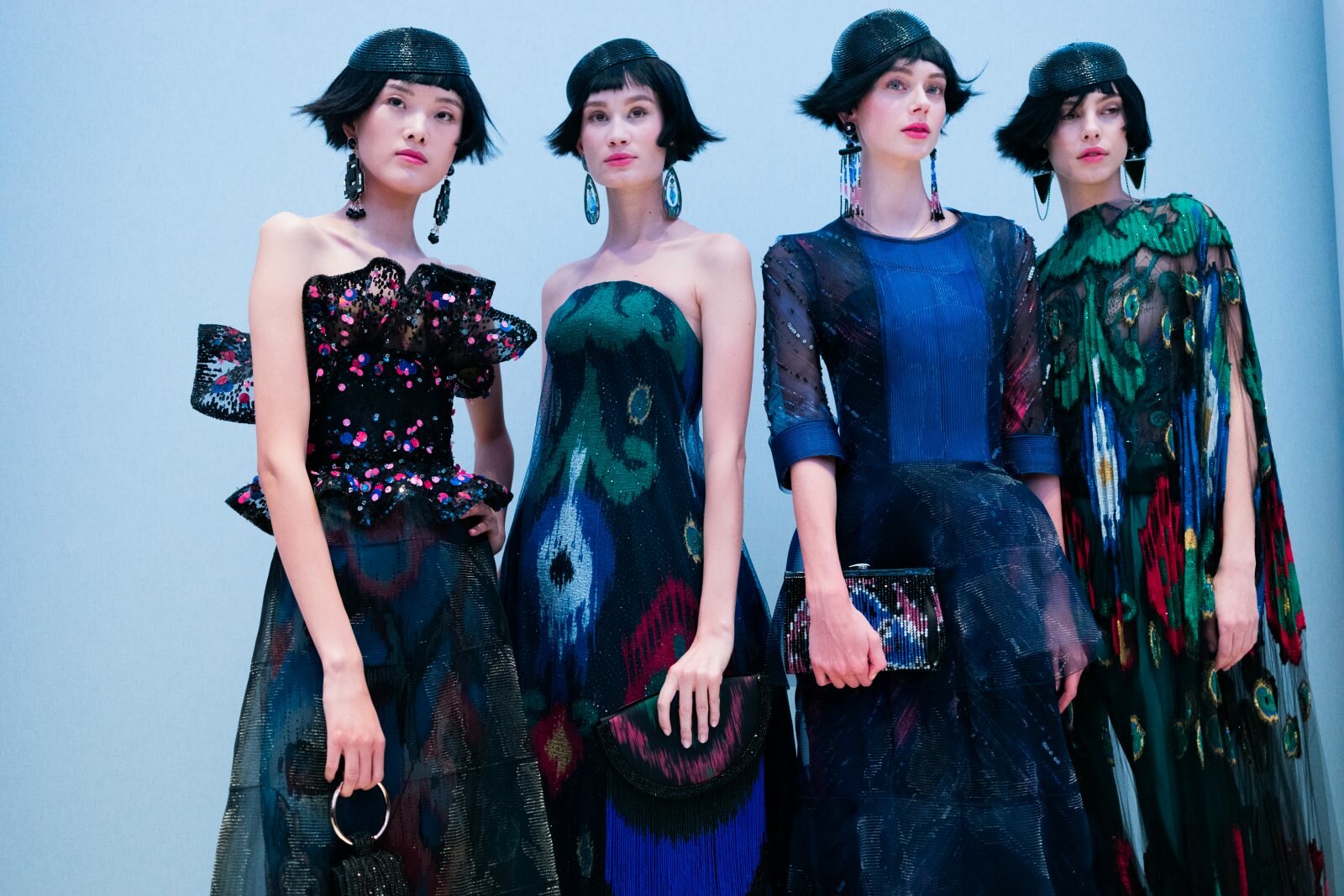01 | Givenchy
Into her third year as creative director, Clare Waight Keller has infused Givenchy with a blend of elegance and enigma, as she drew on the tranquil beauty of an English garden in Sissinghurst for this couture collection.
Describing it as “one of the most romantic places in England”, Waight Keller also delved into the torrid and sapphic love affair between Sissinghurst creator Vita Sackville-West and author Virginia Woolf.
-
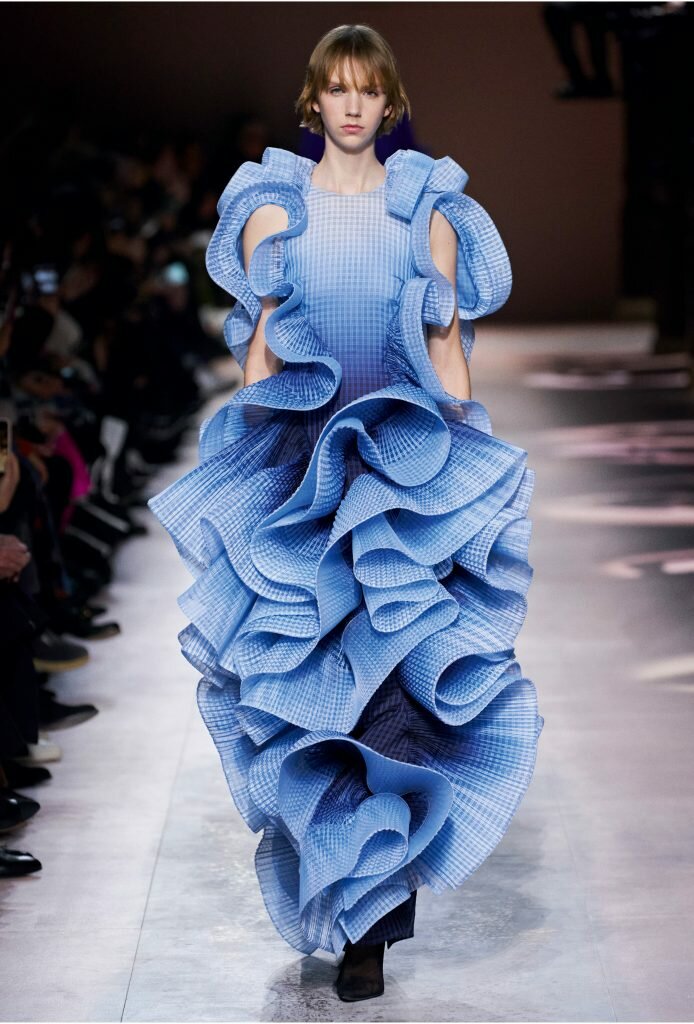
(Image: Givenchy) -
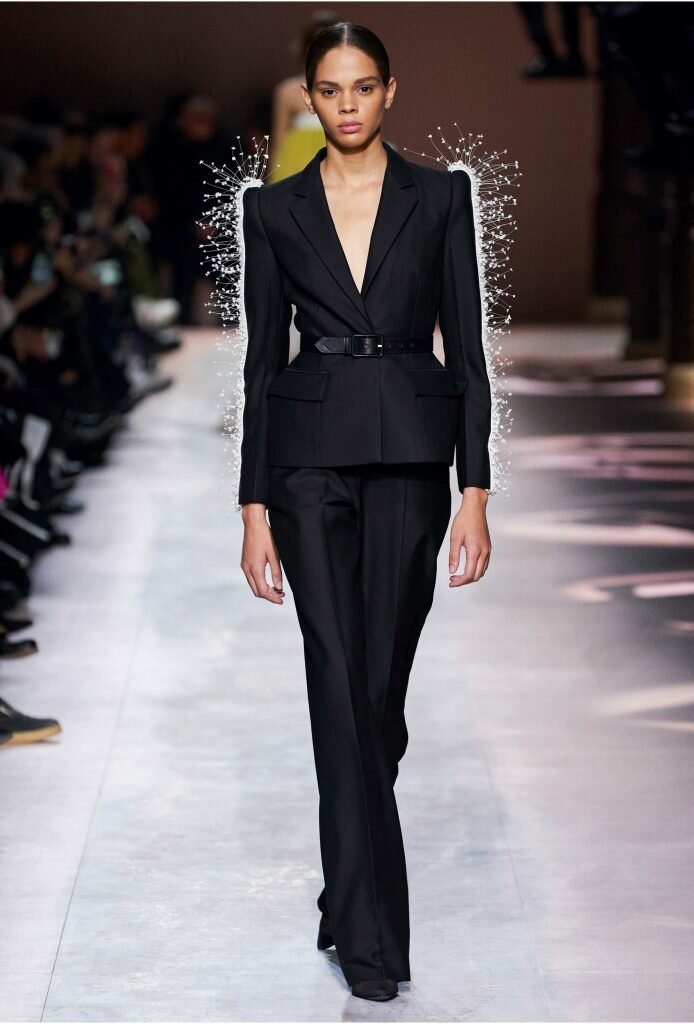
(Image: Givenchy)
What resulted was arguably among the season’s most showstopping confections. Radiant tones of violet and aubergine recalled the “purple border” in Sissinghurst, while drooping wisteria blooms tumbled down the snowy wedding gown Kaia Gerber wore.
By fixing her focus firmly on the house codes of au courant modernity and refinement, Waight Keller conceived sleekly tailored suits. One in black came with sublime white feathered embroidery that bore uncanny resemblance to gypsophila (also known as baby’s breath). Topping the drama, meanwhile, were sculpted cloche hats once shown by founder Hubert de Givenchy.
-
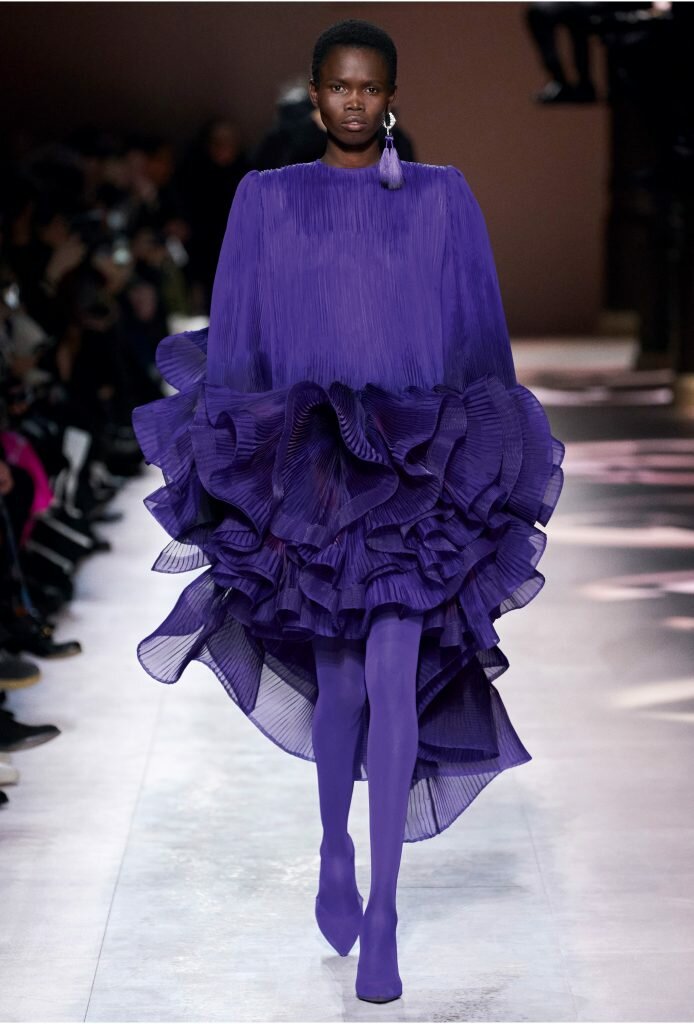
(Image: Givenchy) -
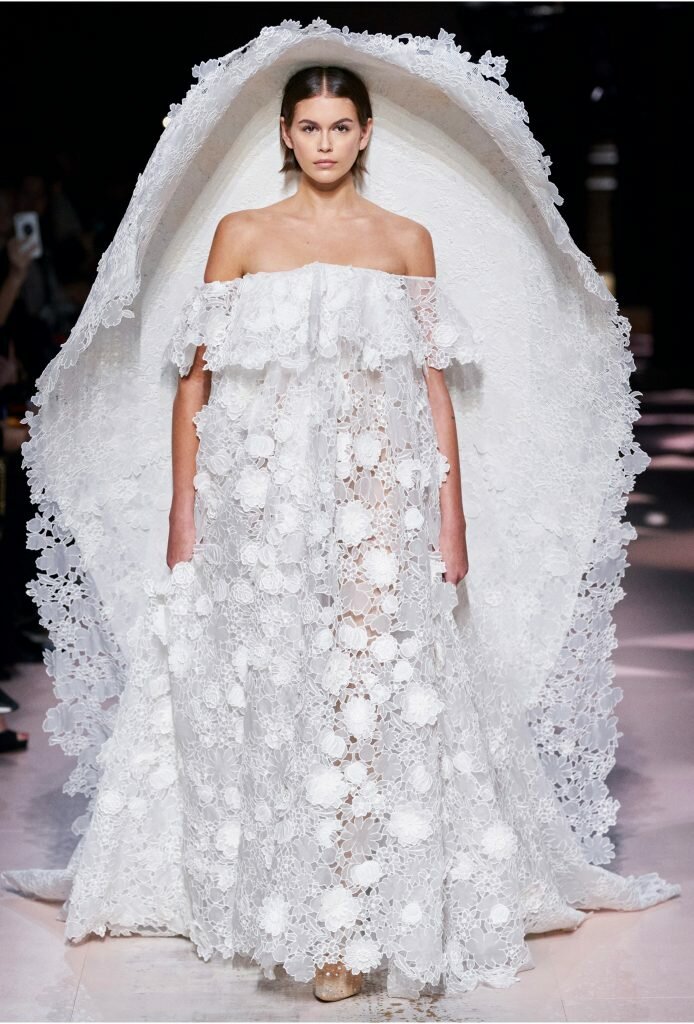
(Image: Givenchy)
02 | Armani Prive
The traditional Asian hand-weaving technique of ikat is well-loved for the fact that it allows for imperfection. With ikat, no two fabrics are ever identical — a quality that applies even to couture.
Italian suit maestro Giorgio Armani’s mind was very much on the jetsetter who’d just stepped off the plane after her vacation in Asia, and marched straight into the boardroom in Europe. His new offerings were interspersed with cropped sleeves and mismatched loose trousers, with a quirky twist courtesy of ikat.
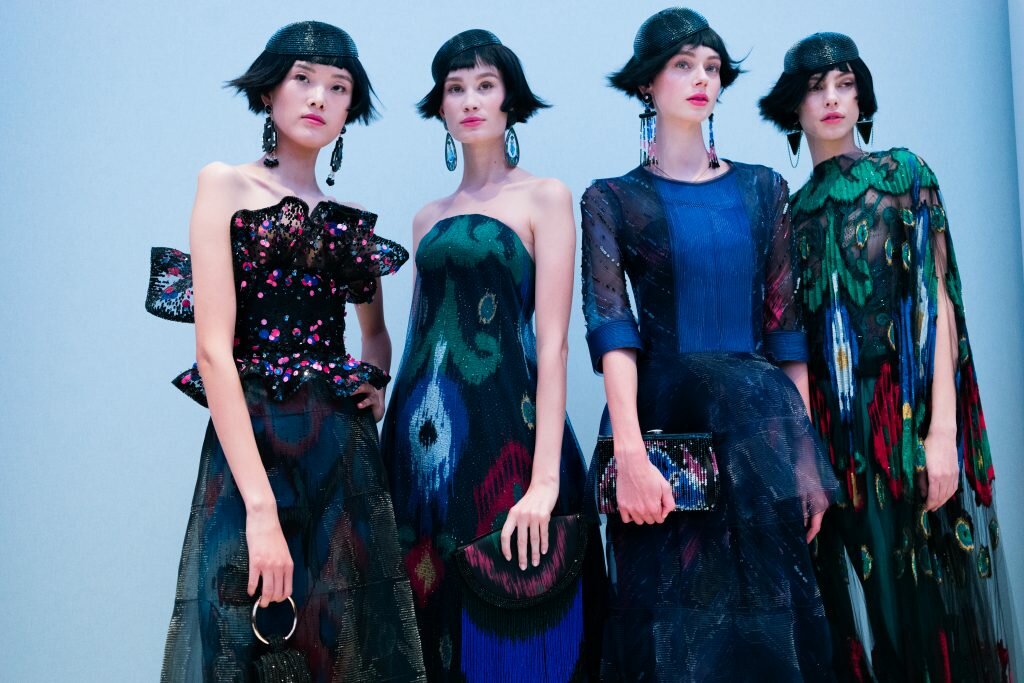
For evening, there were plenty of alluring looks, led by sheer trousers covered in transparent sequins and jewel-toned fringed frocks. While the ikat effect appeared contrived and even a little pastiche on occasion, it redeemed itself with red-carpet gowns towards the close.
For one, Armani is an expert at cutting fabulous dresses. A simple column silhouette was perked up with ikat-printed silk gathered and coiled down the front. For a tulle thriller, he had the ikat pattern remixed into dégradé to contemporary effect. As for the strapless gown in midnight blue organza with an enlarged ikat print underneath? Glorious.
03 | Iris Van Herpen
With her latest collection titled Sensory Seas, the Dutch fashion designer looked to the exploratory drawings of Santiago Ramon y Cajal. The Spanish neuroscientist was known for his freehand depictions of intertwining nerves and synapses in the brain.
These sprawling web-like lines formed the foundation of several looks, including a fishtail dress with 3D laser-cut filaments swirling neatly across black silk chiffon and petals of 3D-printed silicone material arranged on an organza base. Those oil-like patterns on her sweeping gowns? An artistic homage to Cajal.
-
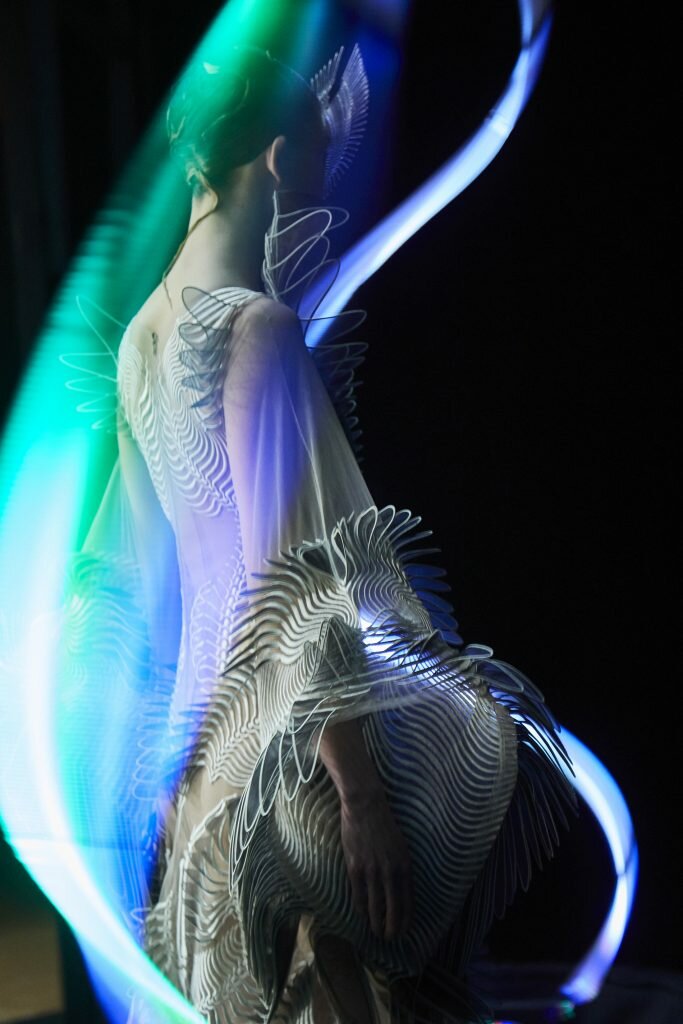
(Image: Molly Lowe B for Iris Van Herpen) -
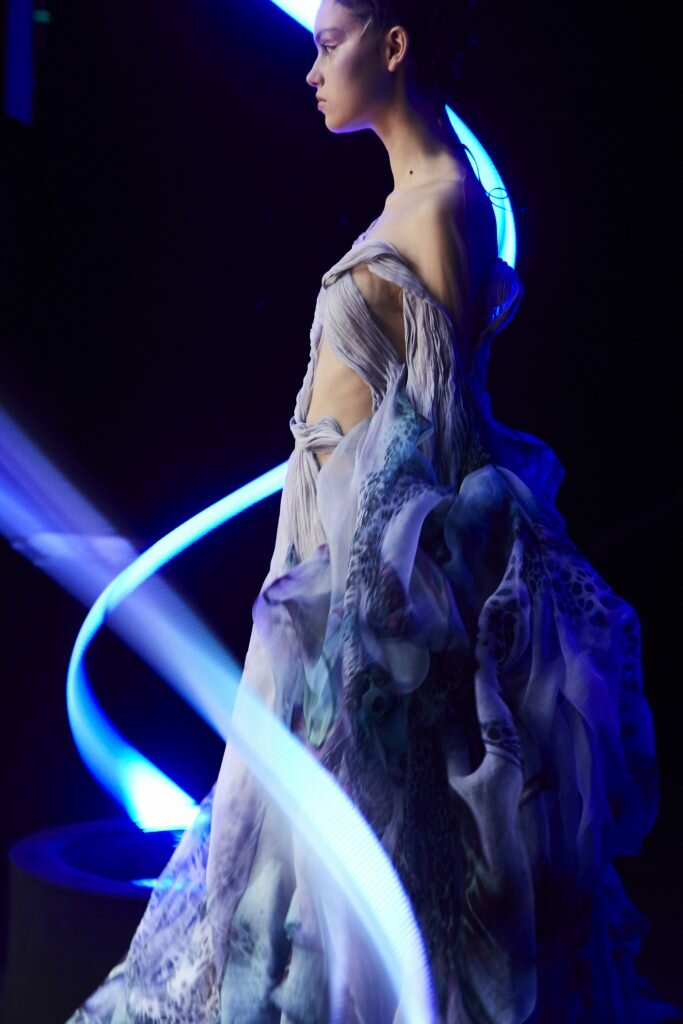
(Image: Molly Lowe B for Iris Van Herpen)
For this exploration of dendrite-like shapes and lines, Van Herpen also examined hydrozoan creatures found in the far reaches of the ocean, with hypnotic tendrils that fan outwards gracefully. This trait was translated into graduating layers of hand-painted organza and laser-cut plastic bubbles that floated through the air with every movement.
04 | Jean-Paul Gaultier
With a collection spanning over 200 looks, Jean-Paul Gaultier revisited his greatest hits.
Gender-bending suits led the way, followed by his take on innerwear-as-outerwear (made famous by Madonna’s 1990 beige satin conical bra). Upcycled fabric scraps crafted into dresses and catsuits? Iconic Gaultier-blue stripes? Bondage-style belts slung over bouffant tulle skirts? Check, check and check.
Days before his 50th anniversary show, the creative powerhouse announced he was leaving the industry. The news sent shockwaves throughout Paris and ensured his front row was packed with everyone from former first ladies to big-name designers and loyal fans and friends.
-
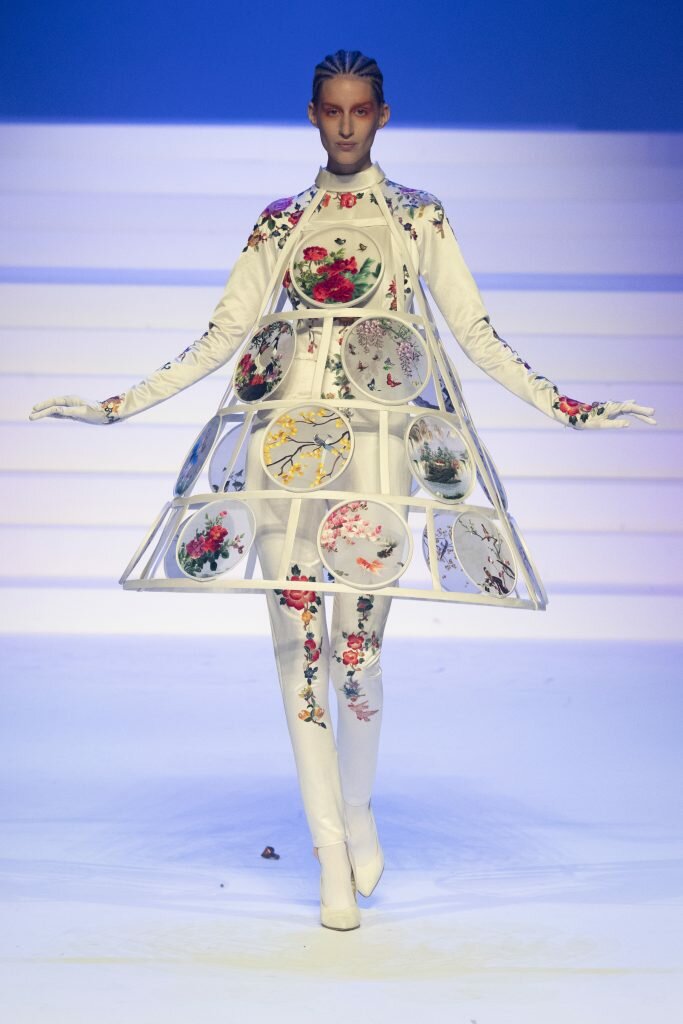
(Image: Jean Paul Gaultier) -
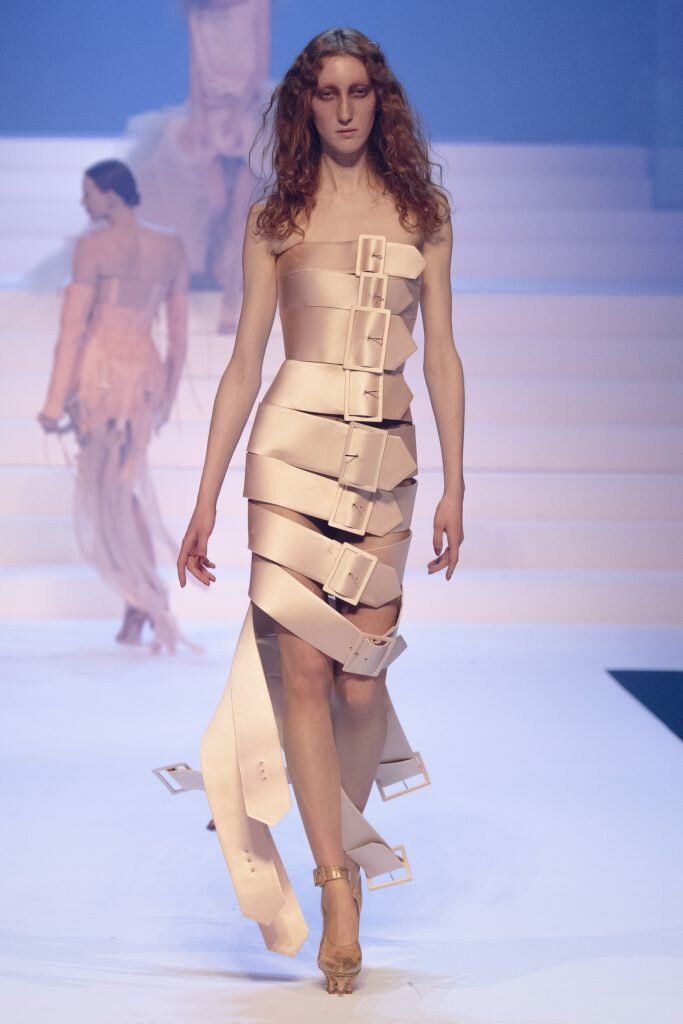
(Image: Jean Paul Gaultier) -
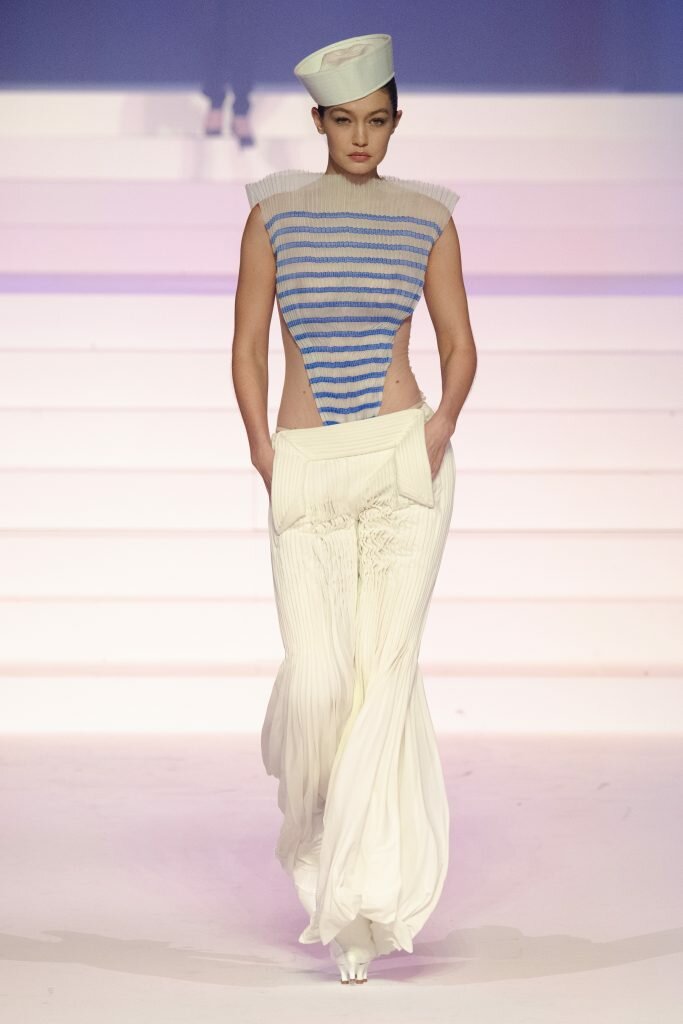
(Image: Jean Paul Gaultier)
“He inspired us all. He gave me my first big break,” Louis Vuitton womenswear creative director Nicolas Ghesquiere, who once interned under Gaultier, related to supermodel Eva Herzigova.
As the man took to the stage for his final bow — raised on the shoulders of models, collaborators and staff — we were reminded that goodbye doesn’t always have to be sad affairs.
05 | Schiaparelli
With only two collections for Schiaparelli under his belt, Daniel Roseberry is looking to prove that he’s more than just the new kid on the couture block.
For Spring/Summer 2020, he deliberated day and dusk dressing, especially clothes that Elsa Schiaparelli loved to wear. Working in the atelier, she stuck to sober day suits, but when she threw her Surrealist parties at night, she often wore Dali-inspired jewellery and hyper-glamorous gowns. The contradiction fascinated Roseberry, and it showed.
He proposed daywear with plenty of louche tailoring that cut away from the body. This was embodied by the opening outfit of boxy black suit with loose knotted white shirt cut down to the navel.
-
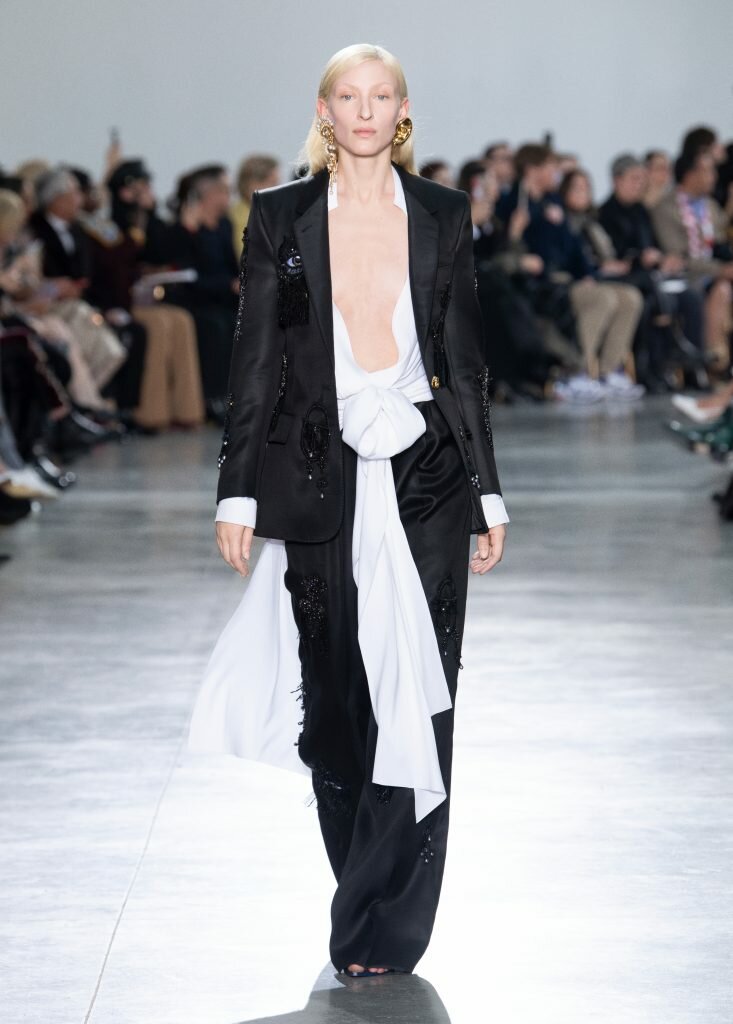
(Image: Schiaparelli) -
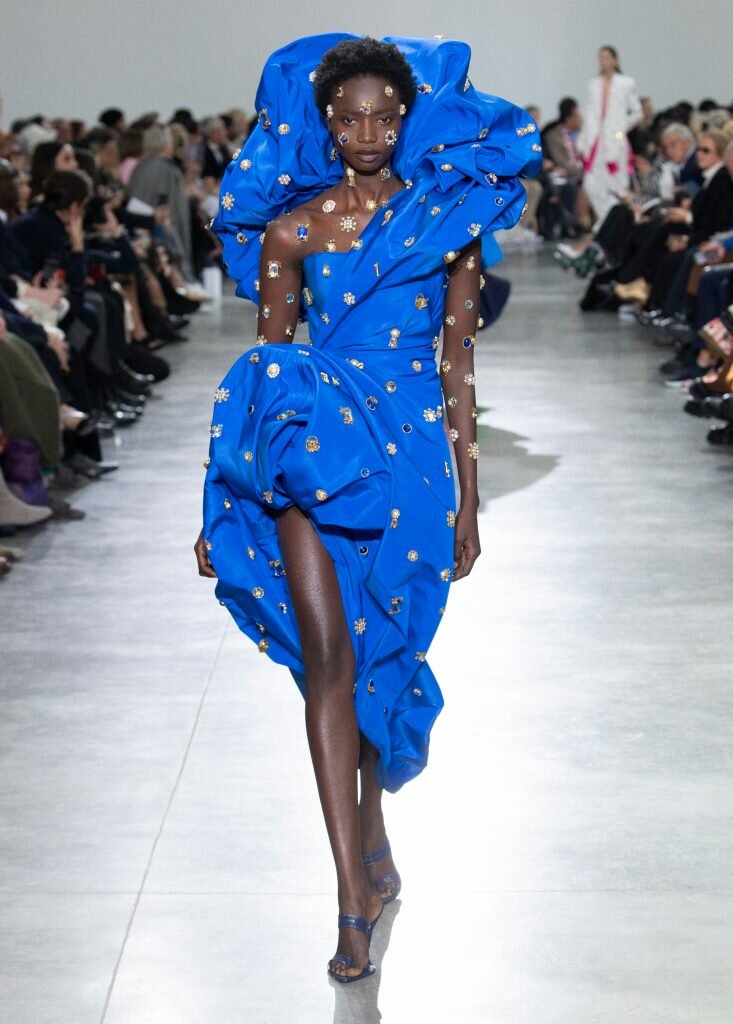
(Image: Schiaparelli) -
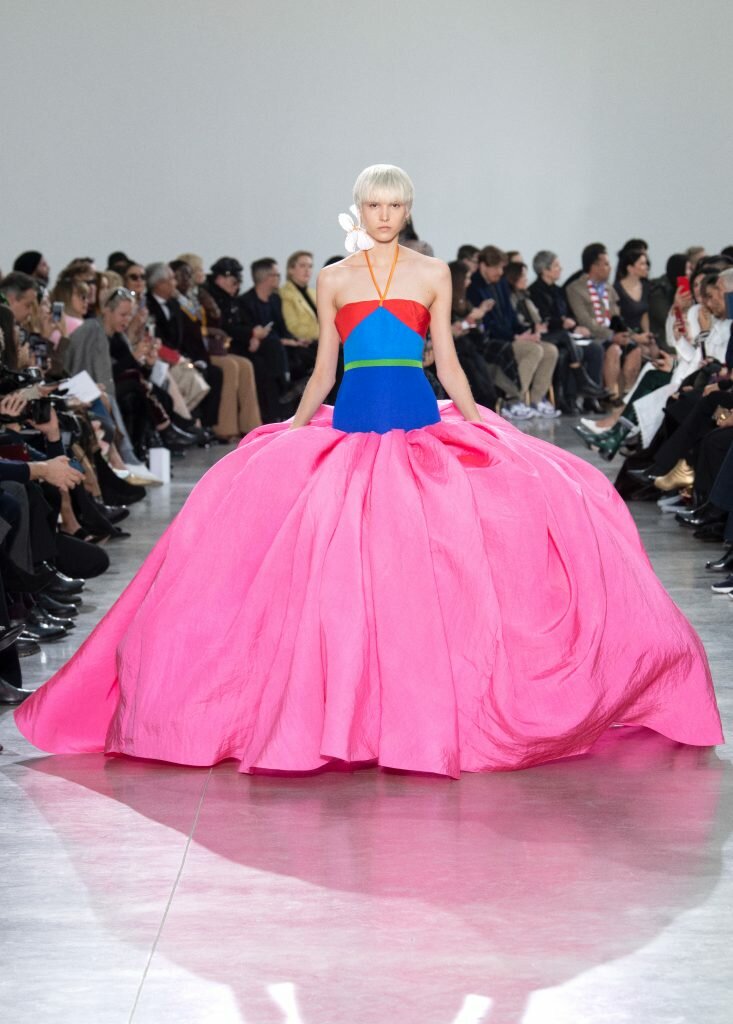
(Image: Schiaparelli)
While the palette remained muted with beige, black and brown, Roseberry attempted to punctuate the pieces with surrealist details, such as glimmering skeletal embroidery, mismatched jewellery and a monochromatic take on Elsa’s signature sun motif.
His eveningwear, by contrast, burst forth with incendiary colours like fuchsia and cobalt blue. A blue taffeta showstopper, puffed up behind the model’s head and sparkling with stitched-on trinket gems, aptly reflected his knack for volume and drapery.
06 | Dior
Maria Grazia Chiuri continues to build on her contemplations of feminism and fashion this season by referencing the work of American artist Judy Chicago.
The set, which resembled a female womb, featured a needlework tapestry in the centre with the question, “What if women ruled the world?”. Throughout the room were other tapestries, with suggestions like “Would God be female?”. Grecian dresses became a key silhouette in this collection.
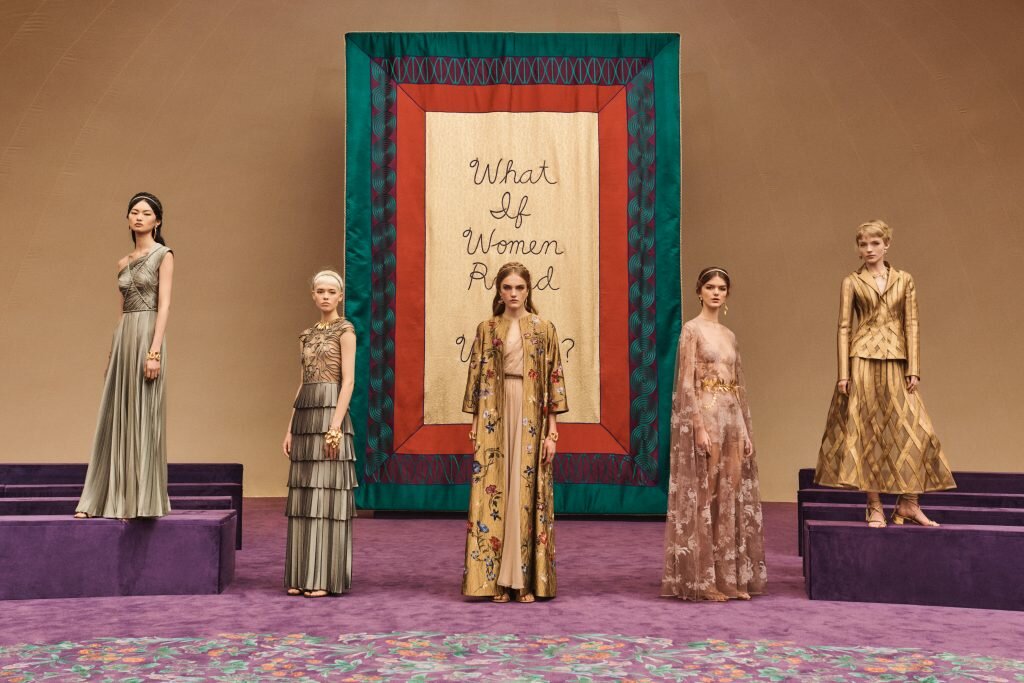
“When Judy talked about this idea of goddesses, my mind immediately came back to my memories of the statues in Rome,” shared Chiuri, who reinterpreted Grecian peplos robes in Botticelli-inspired hues of chrome, olive and beige.
The peplos, which drapes and moves according to a woman’s body shape, was perceived by Chiuri as being “very couture because in couture, we don’t start with a pattern… we drape on our clients”.
07 | Giambattista Valli
By swapping the conventional runway show for an exhibition, Giambattista Valli invited the public to view his creations up-close. It made for greater appreciation and admiration than having a model racing down the catwalk.
And what an awe-inspiring display. Drawing inspiration from the fable-like settings of Rome (where the designer spends half his time), the looks were worthy of any modern-day royalty. Glamour was aplenty with lashings of ruffled tulle wedged beneath a shiny faille sleeve, as well as lemon yellow feathers springing forth from a rose-pink ball gown.
-
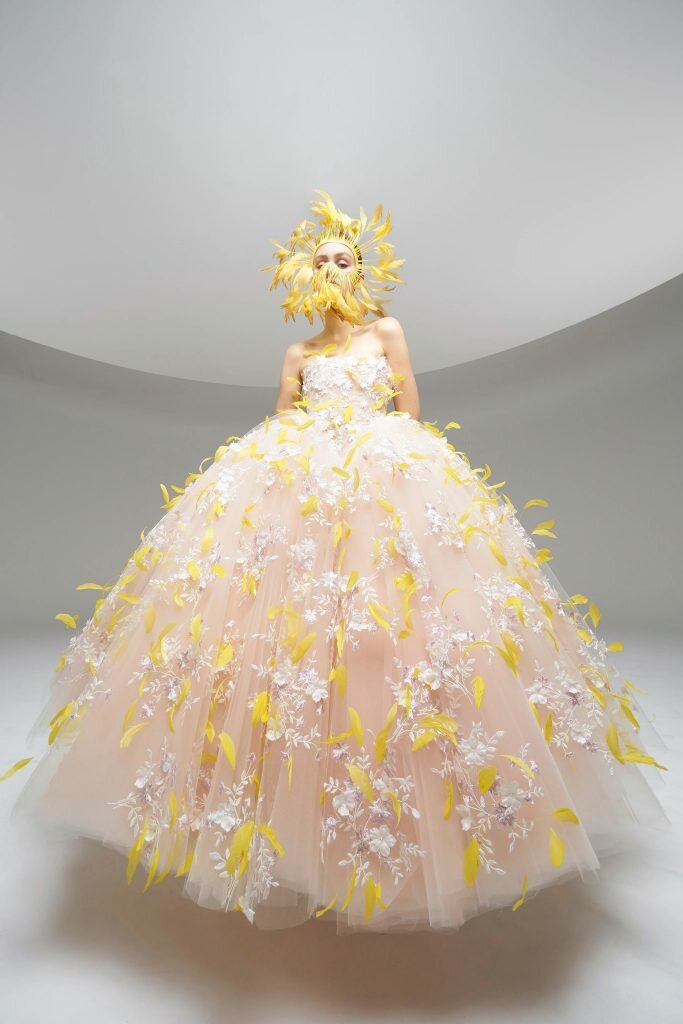
(Image: Giambattista Valli) -
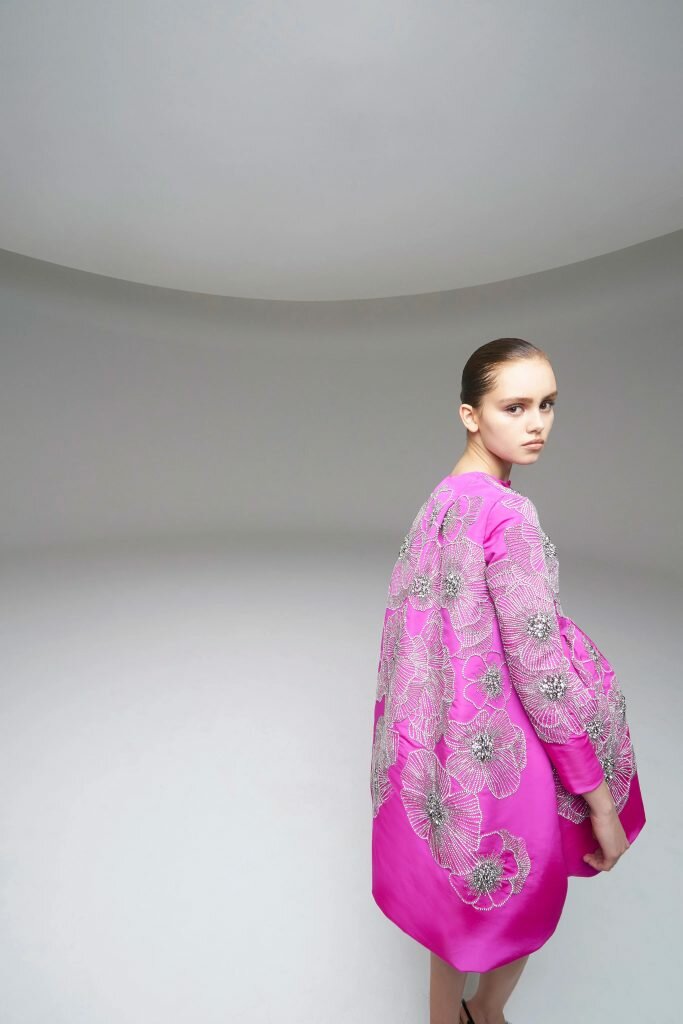
(Image: Giambattista Valli) -
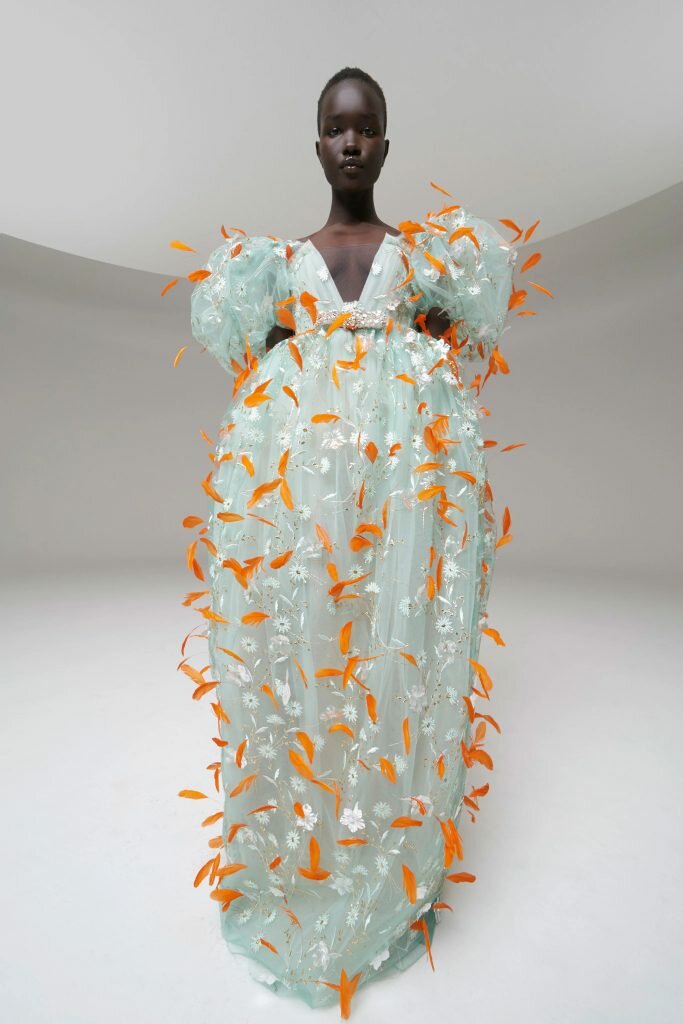
(Image: Giambattista Valli)
Magnified floral motifs — some embroidered and others in intricately-assembled beaded fringes — accounted for the requisite prettiness his customers love. The younger set, on the other hand, will dig the ebulliently voluminous capes, skirts and dresses.
08 | Valentino
“I ran out,” said Pierpaolo Piccioli at his Spring/Summer 2020 haute couture presentation, as if pre-empting anyone who expected him to show his usual fare of colourful taffeta confections. After his Spring/Summer 2018 couture collection, the designer ignited a Big Bang effect that rippled through fashion as other designers took the liberty to mimic his exploration of drape, colour and volume.
So as to depart from what’s now expected of Valentino, the 52-year-old designer decided to tone down the grandeur usually associated with haute couture. But so as not to compromise the high-octane glamour, he introduced a more fitted silhouette.
-
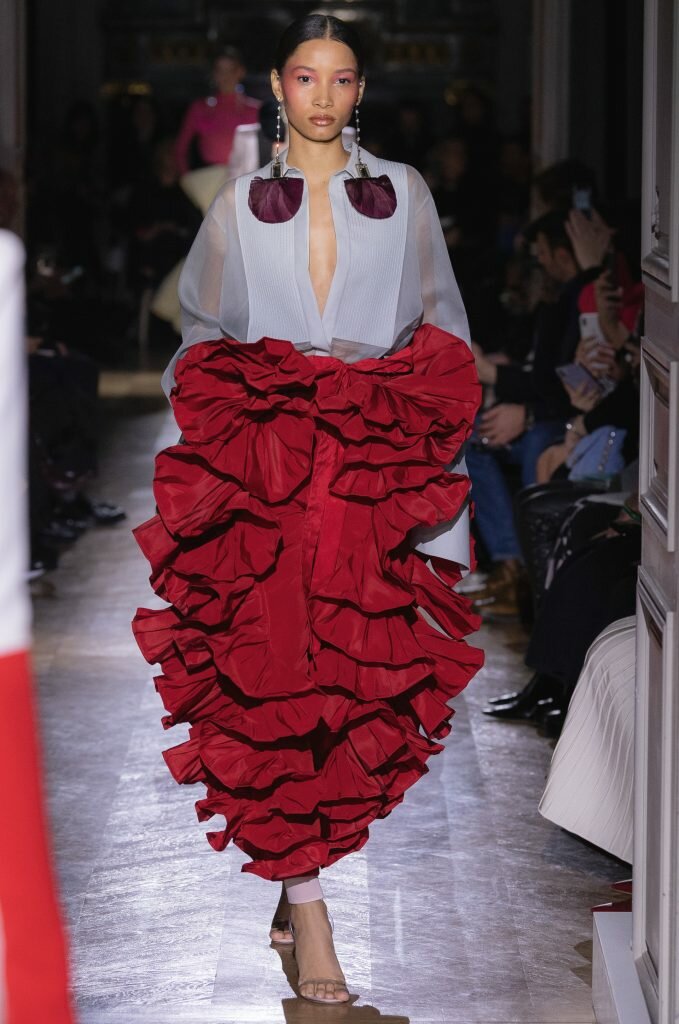
(Image: Valentino) -
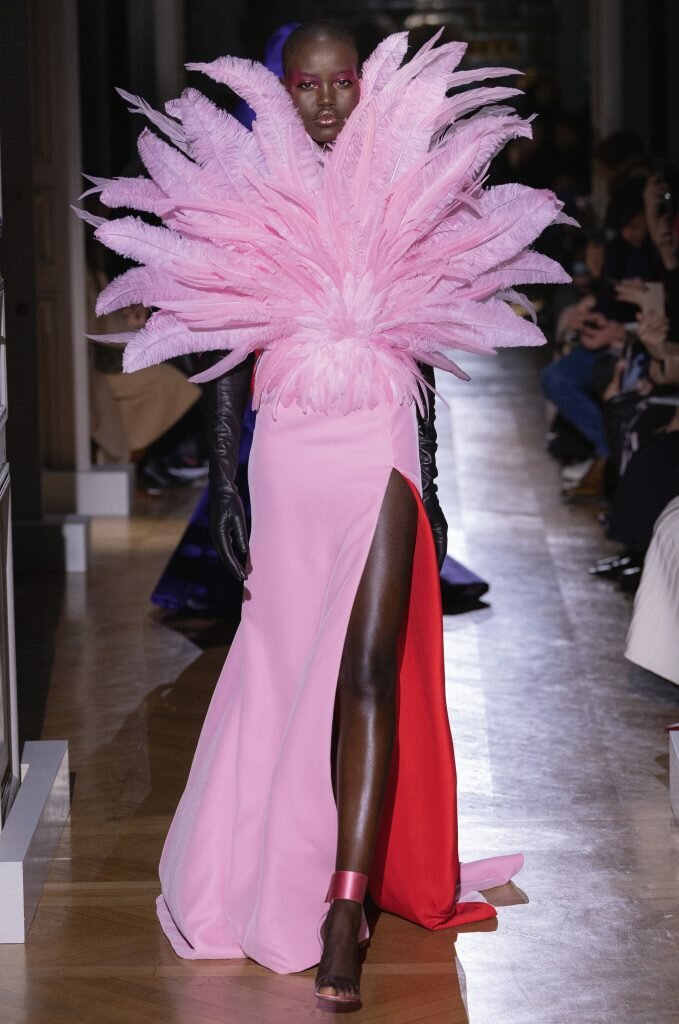
(Image: Valentino) -
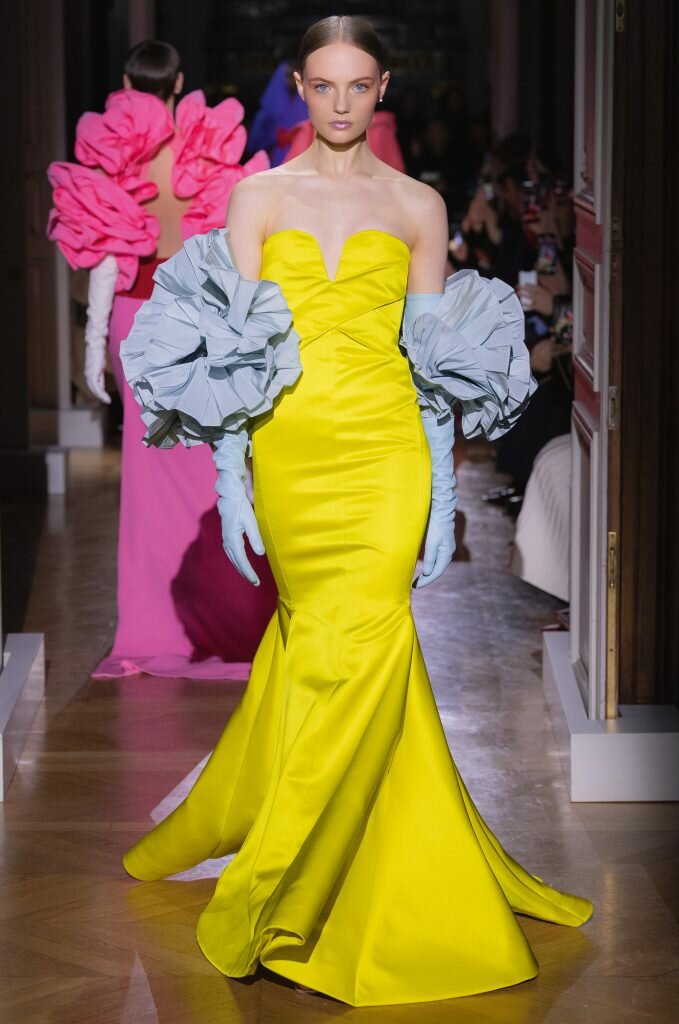
(Image: Valentino)
And rather than being dictated by a moodboard, Piccioli allowed himself to be led by the fabrics instead. “I hate it when people talk about ‘storytelling’. I am not a storyteller”, he stated flatly.
In exploring the notion of deconstruction, he made some peplums detachable and proffered opera gloves galore. Cummerbunds doubled as pockets while clingy knits that appeared layered under dresses were actually attached together. Valentino’s iconic red had a starring role, seen in a lively ruffled skirt worn over an icy blue blouse and a column dress flanked by micro-pleats.
09 | Chanel
Mention “haute couture” and people tend to imagine floor-sweeping gowns embroidered to the heavens with just about every sparkly thing that exists. If Coco Chanel were alive today, she would surely baulk at this.
It was the Mademoiselle’s clean and simple approach towards fashion that Chanel creative director Virginie Viard picked up and expounded here. For the collection, she travelled to Coco’s summer house and the abbey in Aubazine, France, where Chanel had lived since the age of 12.
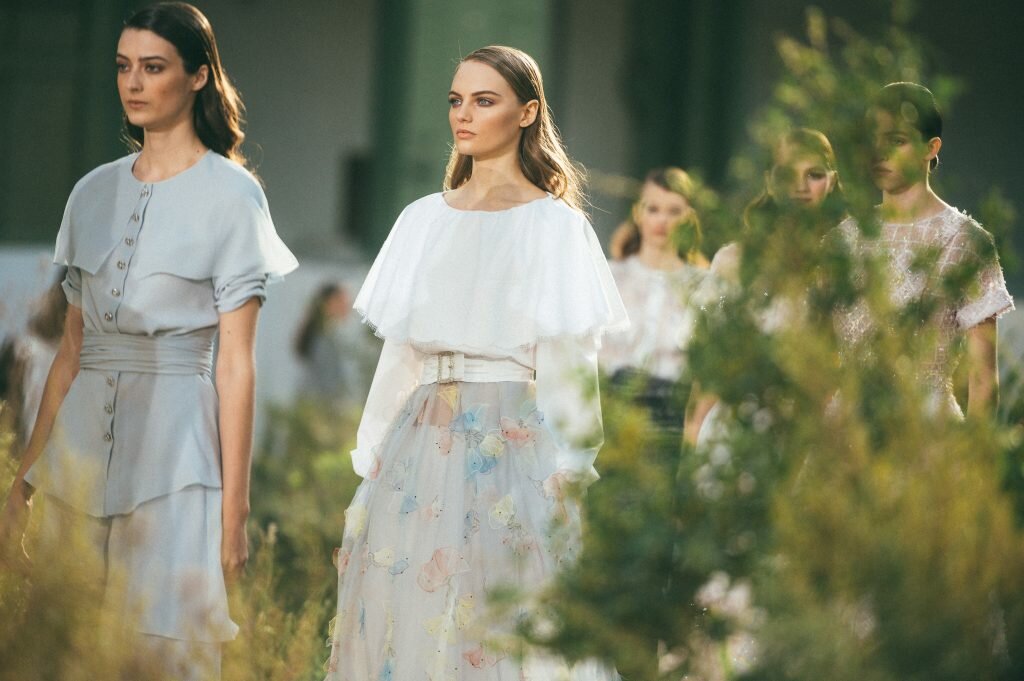
With surprising details on streamlined silhouettes, Viard elevated the effortless appeal of her line-up. For daywear, she gave a lean-cut wool dress Bertha collars that easily transported one to a modern-day abbey, with hand-sewn matt sequins in the motifs of cobbled walkways for a subtle luxuriousness.
Against a set that channelled summer rays shining down on an abbey cloister, Viard’s oeuvre drew references to stained-glass windows — the same ones that inspired Coco’s famous interlocking-Cs logo — with pastel sequins fastidiously applied on a jacket-and-skirt combo.
For evening, sheer confections like tulle-overlaid skirts and ball skirts exuded girlish allure. Some also had floral embroidery encased within soft organza.
10 | Maison Margiela
Rebellion ruled the runway as models strutted out in all manner of Margiela-famous deconstruction. John Galliano’s couture creations were communicated through a brand-run podcast, where the designer proclaimed, “there are too many clothes in the world”.
As a response, he’d sent his assistants out to thrift stores across Paris, and through the upcycling of these clothing, brought forth gorgeous dresses galore.
With a vision that revolved around bourgeois dressing — a black tulle jacket, pepped up with a ballgown silhouette, was the standout piece — he approached each look with an arsenal of manipulations to bring about a signature Margiela-esque spin.
-
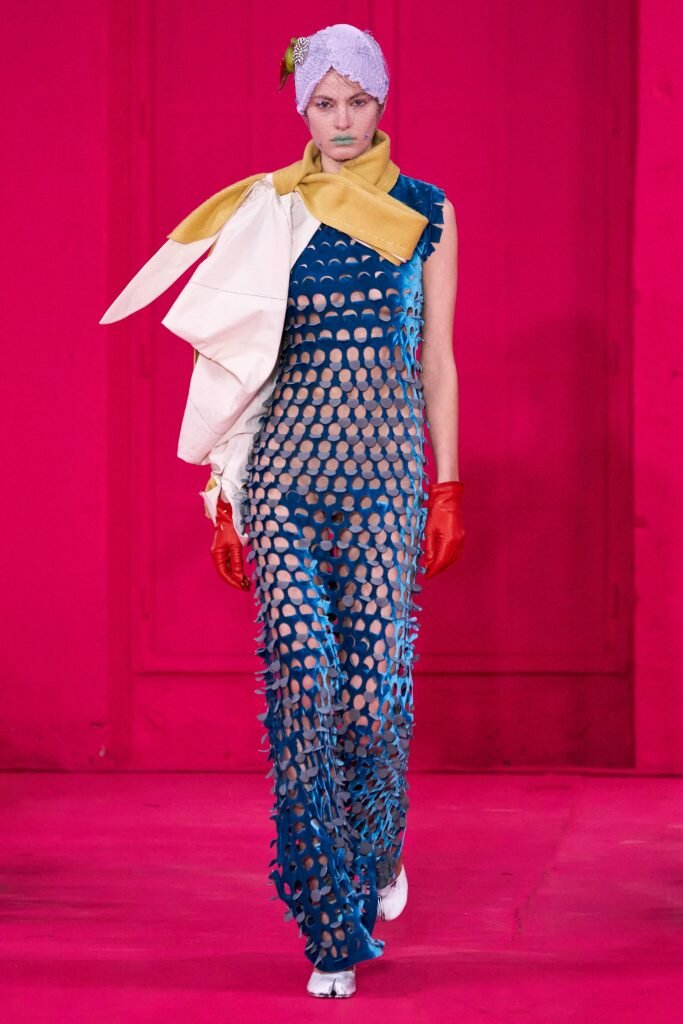
(Image: Maison Margiela) -
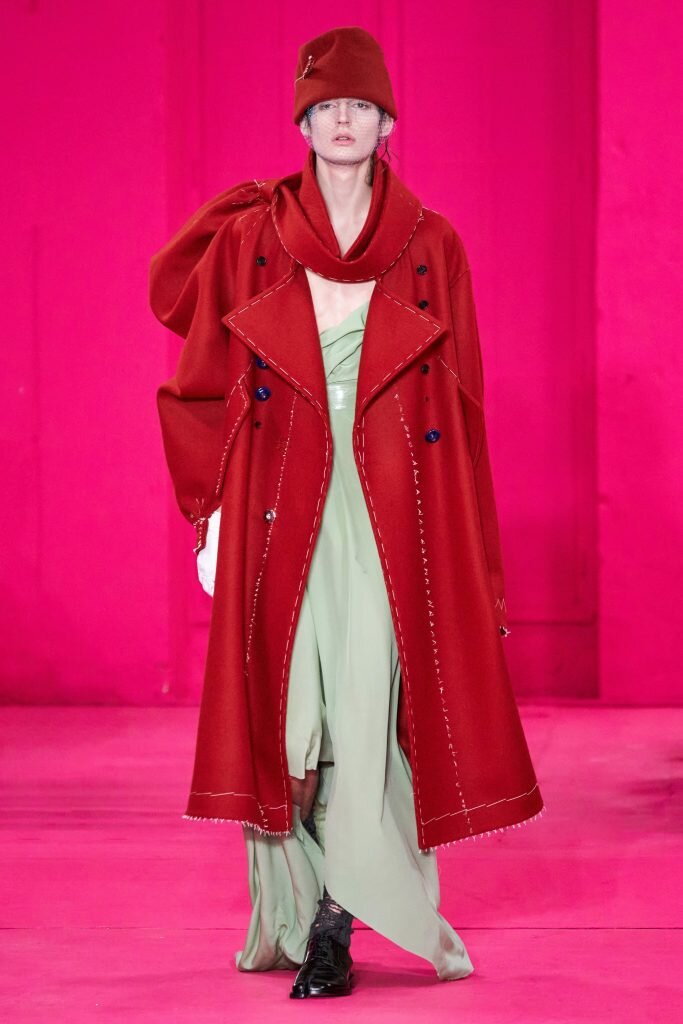
(Image: Maison Margiela) -
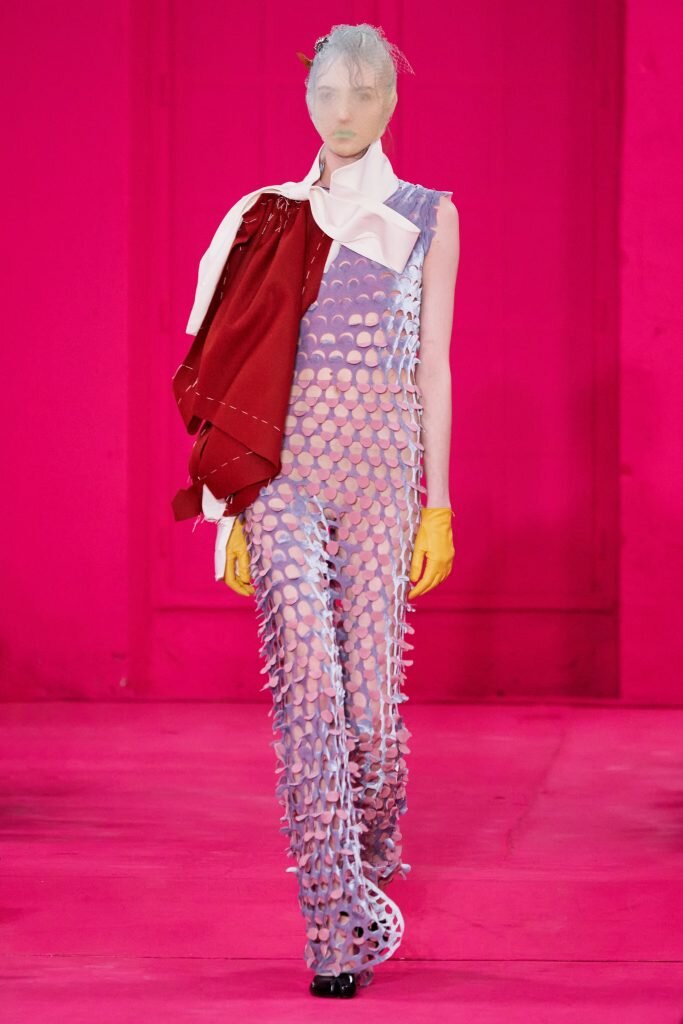
(Image: Maison Margiela)
Large holes were cut into the clothing while mismatched fabrics were tacked together with an offhanded feel. Uproarious collages of colours, from pale lilac to teal and oxblood, served up plenty of IG-worthy moments too.
As if purposefully deviating from traditional couture, Galliano also showcased a work-in-progress look. Here, beautiful silks were sewn together with rough muslin cloth and basting stitches — often the initial stage to assembling a tailored jacket — and left at that.
This story first appeared in the April 2020 issue of A Magazine.
